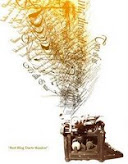When the dancer is in the trance, he communicates with the spirit of the mask. The dancer relays messages from the spirit but they are usually just grunts and screeches. Sometimes a wise man will translate the grunts so that the other people at the ceremony can understand.
African masks sometimes cover the dancer’s face the way we usually think of masks, but sometimes they cover the entire head, like a helmet, or just the top of the head, like a flat hat. The masks can be made of leather, metal, wood, and fabric.
Because these ceremonies have been going on for so long, there are a lot of African masks spread around the world. They are considered objects of art and most major museums have a few in their collections. Look for them next time you visit a museum.
Click here for pictures of African Masks. Notice the three types of masks listed above.
Click here for an easy tribal mask project.
Return to main page.







No comments:
Post a Comment